Personal Defense Weapons, or PDWs, are all the rage. Personal Defense Weapons as a genre are designed to be handy and unobtrusive to carry so as not to interfere with the military duties of combat support and combat service support troops. At the same time they are to be sufficiently lethal as to provide effective defense for the cook, driver, artilleryman, or aviator who might have dire need of an individual weapon in an emergency. While traditional handguns have inadequately filled this niche for decades, military planners have now rightfully begun to expect something more from the firearms industry. The realization that stashing a three-foot assault rifle within the confines of a truck, limousine, or helicopter is not really practical has spurred the recent expansion of several major arms manufacturers into the PDW market. The FN P-90, the H&K MP-7, and the B&T MP-9 represent but a few of these recent offerings.
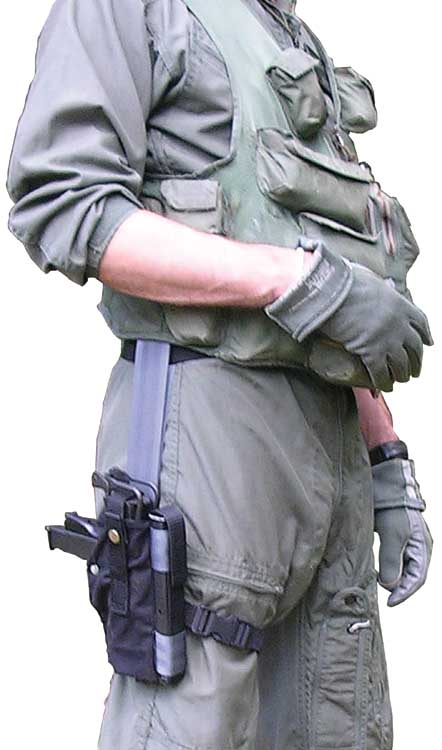
It has been said that nothing in life is free and this adage applies in spades to small arms design. If you build a weapon that is lightweight and easy to carry you cannot very well expect it to stop a target wearing body armor at 1,000 meters. Lest we become too enamored with today’s whiz-bang PDW offerings, however, let us appreciate that the concept is hardly new.
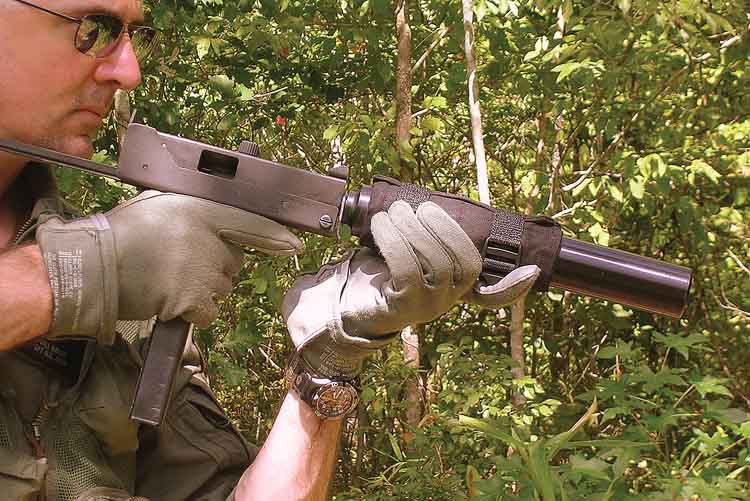
The WWII-era M-1 carbine has been described in print as an early PDW. Designed to be light and handy while firing an intermediate-sized round, the fully automatic M2 version actually comes closer to meeting the criteria of an assault rifle than a PDW. While no doubt a great improvement over the M1 Garand as regards portability for second echelon troops like truck drivers and artillerymen, the carbine is still three feet long and is a bit of a nuisance to maneuver within a vehicle.
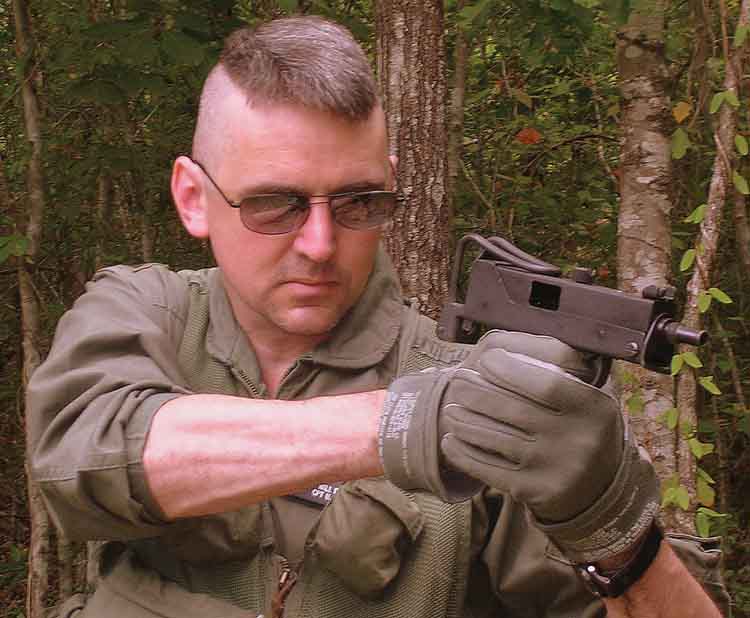
While associated with the Military Armament Corporation, Gordon Ingram and Mitch WerBell actually chased the U.S. military PDW market with some enthusiasm nearly four decades ago. Realizing that a handgun of any flavor, much less a big bore cannon like the M1911 .45, which was the service weapon of the day, was a difficult weapon with which to develop proficiency, Ingram and WerBell set out to convince the U.S. military that the MAC series of submachine guns held the most promise for arming second echelon troops for whom direct engagement with the enemy was a rare unintended consequence of their regular jobs. WerBell in particular traveled to Southeast Asia to demonstrate his weapons to military officers in a combat theater, stirring considerable interest and notoriety but few paying contracts. Given that the targets of the day did not typically wear body armor, a case could be made that they were following a doctrinally sound path.
To quote from the original Military Armament Corporation promotional sales literature for the .380 MAC-11, “The MAC/Ingram M11 is totally new and unlike any handgun ever produced. It falls loosely in the category of submachine guns…yet offers far more, in that it combines pistol mobility and an exceptionally heavy, high volume of automatic fire over reasonable, common combat ranges. Offering a sustained rate of selective semiauto or full automatic fire, the M11 successfully bridges the gap between less efficient pistols or revolvers and the limited applications of more cumbersome machine guns and submachine guns of an earlier bygone era… The vehicle driver, rear area technician, armor crewman, aviator, and crew-served weapons gunner all must have available to them a light, easily-carried automatic weapon which can produce a heavy volume of fire effective at a reasonable range.” Sound familiar? Perhaps this PDW concept is not quite so cutting edge as we might have believed.
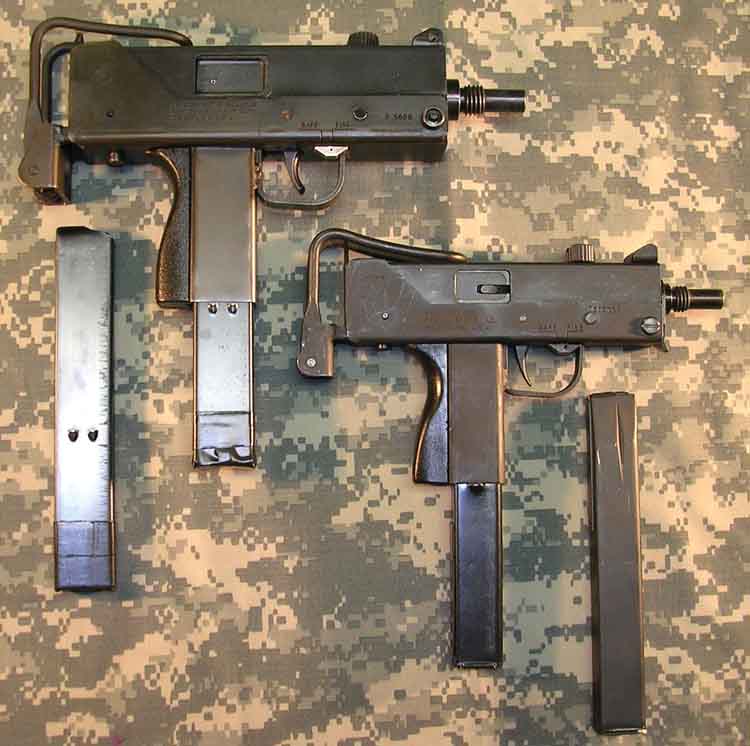
The stubby little MAC series submachine guns were indeed handy. By the manufacturing standards of the day they were amazing. Constructed of sheet steel pressings with a minimum of machining reserved for the bolt, barrel, and fire control system, the little buzzguns could be churned out en masse for a song. Offered in 9mm, .45 ACP, and .380 calibers, the designers tried to make the MAC weapons appealing across the military and special operations spectrum.
The full sized MAC-10 in 9mm or .45 is about as compact as one might hope for in a weapon firing a general issue military cartridge. It is, however, at six pounds four ounces unloaded still uncomfortably heavy. This is, incidentally, the same weight as an unloaded, full-sized M16A1. The accelerated rate of fire necessitated by such a short bolt travel in such a tiny package makes control a challenge and effectively negates whatever training benefit a military organization might obtain over a conventional handgun.
The under-appreciated MAC-11 in .380, however, is an interesting option. Where a full size MAC-10 in 9mm tips the scales at nearly six and one half pounds and dances around rather vigorously on full auto, its .380 baby brother weighs only three and one half pounds and is fairly controllable with appropriate technique. While it does cycle at a breathtaking 1,600 rounds per minute or greater dependent upon the ammunition used, with a sound suppressor in place it is pleasant to shoot and, at reasonable ranges, acceptably accurate. If equipped with an extra six inches or so of muzzle attachment to prevent one’s shooting one’s own fingers off, the truck driver or helicopter pilot armed with a MAC-11 would be much better prepared to handle unpleasant encounters with the enemy than his counterpart armed with a conventional handgun. If the threat consists of enemy personnel bereft of body armor, a cloud of .380 projectiles is up to the task. Considering that the MAC-11 dumps its thirty-two round magazine in 1.1 seconds, from the perspective of purely Newtonian physics that’s the muzzle energy equivalent of one and one half .50 caliber BMG rounds. That’s not too shabby for a gun that weighs three and one half pounds and fits in a holster.
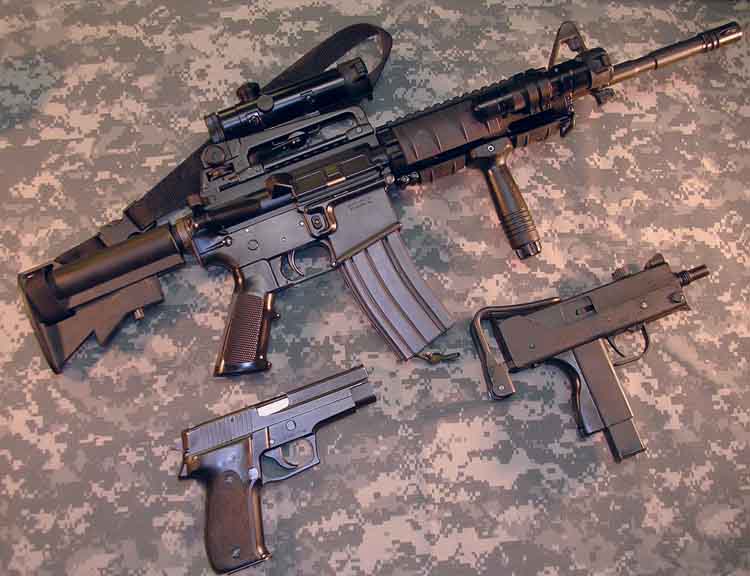
To quote further from the promotional literature, “With its high rate of fire and relative ease of control, it has been likened to a one-hand shotgun for its massive bursts of sheet fire… Training is greatly simplified and, as a positive adjunct, combat confidence and troop morale increase with the sure knowledge of improved hit-probability.” While the claims of near-supernatural effectiveness and ease of control might be sugarcoated somewhat, the MAC-11 did bring some interesting capabilities to the table.
The prevailing thought in the sixties and seventies was that machine pistols were interesting novelties but that they had no practical military or law enforcement applications. It was assumed that the blistering rate of fire combined with the compact platform made the military application of the fully automatic handgun more dangerous to friendly bystanders than to the enemy. The Glock model 18 has shown this to be at least somewhat presumptuous. The fully automatic Glock pistol is certainly not an appropriate issue weapon for every cop on the street or your typical Army cook but in the right hands with a little training, fire discipline, and a shoulder stock, a serious shooter can keep most of his rounds in a standard tactical silhouette at reasonable handgun ranges even at more than a thousand rounds per minute. Additionally, given that the Czech M61 Skorpion was a product of a similar era and vision and has gone on to render extensive and successful service in applications spanning both ends of the moral and legal spectrum we can see that the concept, at least at one time, had some serious merit. If nothing else, this gives us cause to rethink the practical applications of Mr. Ingram’s tiny little .380 subgun.
The MAC folding stock design has been much maligned. While extremely compact and ingeniously designed, the MAC stock requires two different manipulations for deployment and is fairly flimsy. First, the wire butt assembly must be compressed together and rotated around into its deployed position. Then the stock catch may be depressed and the stock struts extended. While the stock does wobble badly and, on the MAC-11 at least, is too short for all but the most Lilliputian of shooters, it folds up to practically nothing and provides a much more stable and effective shooting platform than one would find simply shooting the weapon off hand. This seems like one of those classic half-full/half-empty, optimist/pessimist arguments. While the wire stock on the MAC subgun is hardly in the same league with, say, the new multidimensional offering on the FN SCAR, it is still a tremendous improvement over a typical handgun sans stock and a little time on the range proves it.
On the range a serious shooter can achieve some fairly respectable performance with the little MAC. Firing semiautomatically with the stock extended placed all rounds easily within a pie plate out to fifteen meters and the 32-round magazine can keep you launching projectiles one at a time until you get bored with it. The sights are rudimentary at best but still more than adequate for the intended mission. The open bolt design does serve as a detriment to accuracy but its mass is so small that the deleterious effect is minimal. Even in the hands of inexperienced shooters, the MAC and its flimsy folding stock consistently provide better semiautomatic performance on the range than does even the most advanced tactical handgun. Taking a firm stable grip and keeping bursts between three and five rounds, a seasoned shooter can still keep a large percentage of his rounds on that same unfortunate pie plate firing fully automatically so long as a suppressor or similar muzzle attachment is employed. As a former Army helicopter pilot myself, I would much sooner sport a .380 MAC-11 with a half dozen magazines in a survival situation than an issue 9mm handgun and a fraction of the ammunition for nearly the same weight and space envelope.
One of the down sides to servicing the second echelon mission for small arms is that those troops in question are not in general “gun guys” and they do not have the luxury of extensive, regular, and repetitious training time on their individual weapons. In the case of a tiny submachine gun like the MAC-11, this is a recipe for finger amputations or worse. Considering there is not any effective mechanical impediment to allowing one’s support hand to slip out in front of the MAC-11 during recoil, the gun really is exceptionally dangerous to someone not adequately trained in its employment. Before the MAC weapons could have been safely deployed with combat troops some redesign would have been required to make it a little bit tougher to shoot one’s fingers off.
The MAC-11’s time has clearly past. Technology and history have moved on to other things and Gordon Ingram’s diminutive little submachine gun never made much of a splash outside of U.S. collectors’ circles. Were the circumstances slightly different, however, and the military leadership a bit more open-minded, some variation of a MAC series submachine gun might have found its way into the hands of sixty percent of the soldiers in the U.S. armed forces. At the very least that serves as food for thought.
| This article first appeared in Small Arms Review V14N2 (November 2010) |











